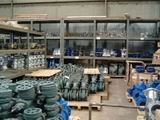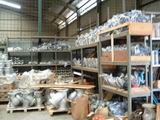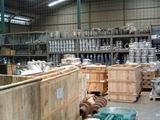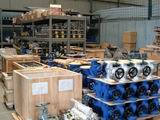

Products
The number of valves used for the control of fluids today is enormous, with valves ranging from very simple shutoff devices to extremly complex servosystems. They may range in size from tiny metering valves used in aerospace applications to industrial and pipeline valves measuring several feet in diameter and weighing hundreds of pounds. Valves control the flow of all types of fluid ranging from air and water to corrosive chemicals, slurries, liquid metals and radioactive materials. They may operate at pressures in the vacuum region to pressure of 100,000 psi or more, and temperatures from the cryogenic region to those of molten metals. They may have lifetimes ranging from only one cycle to many thousands of cycles without requiring repair or replacement. Valves may have very strict leakage requirements in space vehicle applications where even The tiniest leak may be disastrous, or they may have very generous leakage requirements in many industrial uses where loss is of minor importance or recovery is very easy. Valves may be actuated by a variety of means such as manual, electrical, pneumatic, etc. They may respond in a prescribed manner to signals from pressure and temperature transducers and other types of sensors, or they may simply open or close independently of actuation signal strength.
Nearly all of the valves in use today can be considered as modifications of a few basic types. Valves may be classified in different ways such as by size, function, material, type of fluid carried, preesure rating, actuating member, and others. We prefer to classify valves according to the nature of closure members employed. We feel that this is the most fundamental scheeme. Also, it is simpler since nearly all valves will fall into one of approximately eight categories. In this chapter, we discuss some of the properties and uses of these basic types of valves.
Valves Type
Valves Gallery




